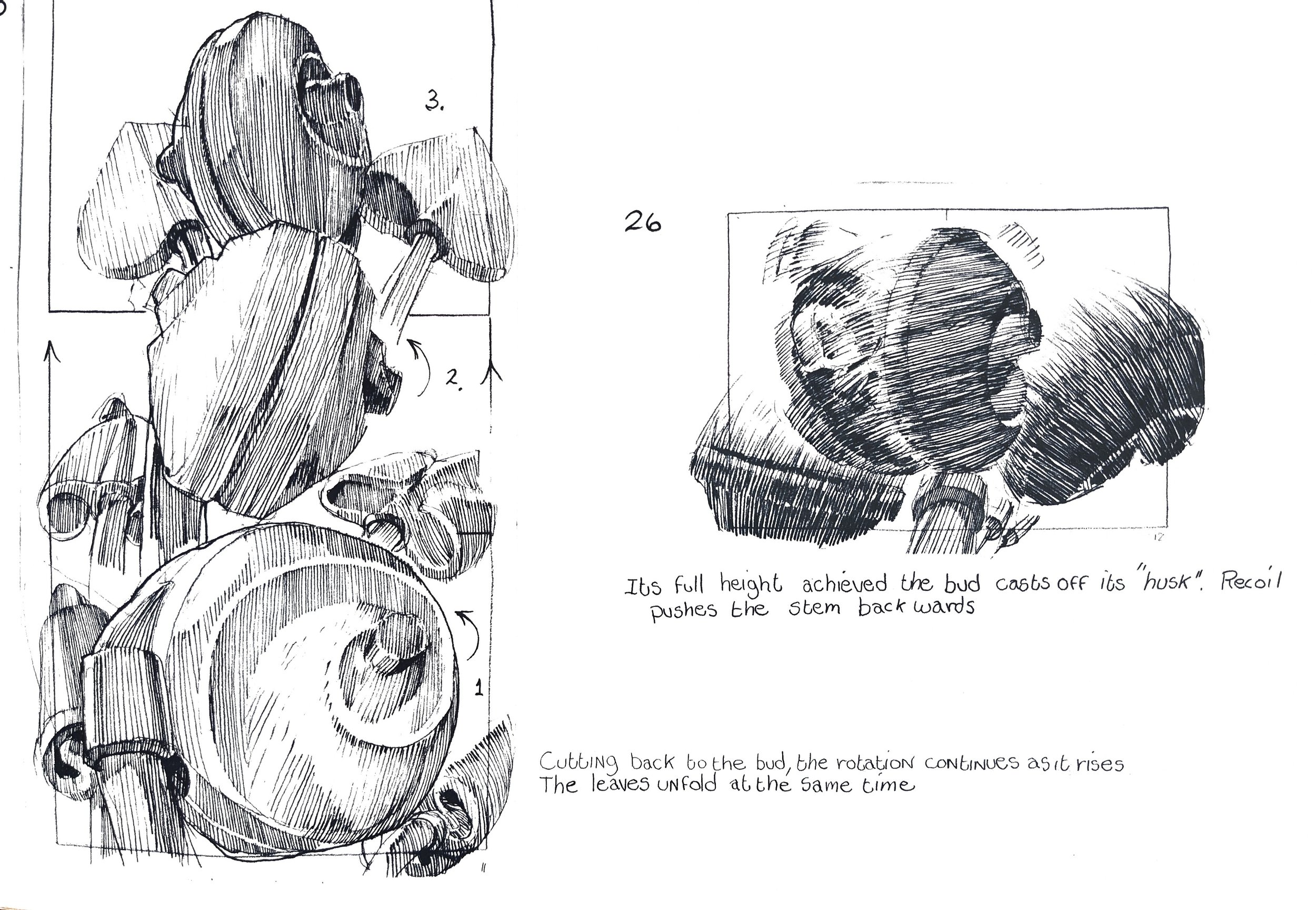28,000 drawings later
Making the Film
In 1980, I began to work on a hand-drawn, hand-painted film that eventually became The Burial of Natty Bumppo. I worked on the film for many years—actually many decades.
To produce one minute of animated film in those days required a minimum of 720 drawings. The Burial of Natty Bumppo, which is 28 minutes long and includes intricate scenes with many layers of animation, required something like 28,000 drawings.
Drawing in Paris, 1995
I happily did all those drawings because I loved the feeling of touching the pencil to paper and physically making an image. That contact between me and the paper has always been essential to my engagement with animation.
Frontispiece for an early set of storyboards
The film began as a series of hand-drawn storyboards that were used to create a coherent storyline of scenes to be animated.
To help me visualize key elements of the film in three dimensions, I built a number of models using cardboard and papier mache. Some appear in the storyboards; others were used principally to animate.
Once I began animating with pencil on paper, I was assisted by a small crew of dedicated art students who worked in my home studio. I laboriously inked the completed scenes on acetate cels and they painted them according to color models. In a sign of things to come, my long-time colleague and digital animation expert Casey Herbert resurrected a technology from Disney’s golden era to help speed the process. Originally invented by Ub Iwerks in 1961 for 101 Dalmations, the adapted xerox system transferred my animation drawings directly to acetate cels, ready to be painted. The time-consuming process of inking cels was no longer necessary.
My son, Ned, assisting in my animation, 1988
As the years passed, the film slowly began to come together. Individual scenes were drawn, transferred to acetate cels, painted, and then finally shot on 35mm film using Casey’s Oxberry animation camera.. Over time, my students and assistants went on to other things, but I continued to work and animate, filling out the film from my storyboards and imagination as I went. The film grew from a handful of minutes to almost twenty.
However, by the time I had completed roughly eighty percent of The Burial of Natty Bumppo, traditional animation technology was beginning to vanish. Studios large and small either converted to digital animation or quietly disappeared, and soon it was impossible to find either a camera or an operator that could photograph the intricate exposure sheets that many of the film’s scenes required. Even the paints I used to color the cels disappeared from the market, their long-enduring manufacturer finally going out of business.
The years of work I had put into the film came to a standstill. I couldn’t see a path forward.
In 2016, I retired to the mesas of northern New Mexico and the thousands of individual pieces of artwork that made up the film were locked away in a storage unit, surrounded by sagebrush and buffeted by the winds of the high desert.
Everything changed in the summer of 2019, when Casey visited me at my home in Taos, NM. To my utter shock, Casey offered to finish the film for me.
Casey, who owns and operates the animation studio FlyingFoto Factory in North Carolina, had provided camera services for the film in the 1980s and 90s, photographing completed scenes on 35mm film. Now he was asking me to send him every piece of artwork that I had completed over 40 years. And so, over 2000 pounds of drawings and painted cels were loaded onto a pallet and shipped.
The film was, miraculously, back in production.
During the first two years of the pandemic, Casey captured tens of thousands of pieces of art, eventually creating over 130,000 separate digital files. He also painstakingly restored some art that had been damaged and digitally completed key scenes that had been animated and color-keyed but never inked or painted. Digital effects were added at points where they could enhance the image and digital camera work provided results unavailable with traditional 35mm film imaging. My original storyboards, layouts, and shooting sheets aided in the final digital assembly.
My son helping me review new footage, 2022
A talented sound designer and editor, Jim Haverkamp, joined the team. And my dear friend George Winston gave us the rights to use tunes I had selected from his albums. By May 2023, astoundingly, the film was finished.
All of what you see in The Burial of Natty Bumppo is art that was originally hand-drawn. I hope you can tell by the quality of the line that this is animation before digital. Even though the film was rescued, restored, given new life, and finished using contemporary technical tools, hand drawings are its core. I hope you enjoy it.



























